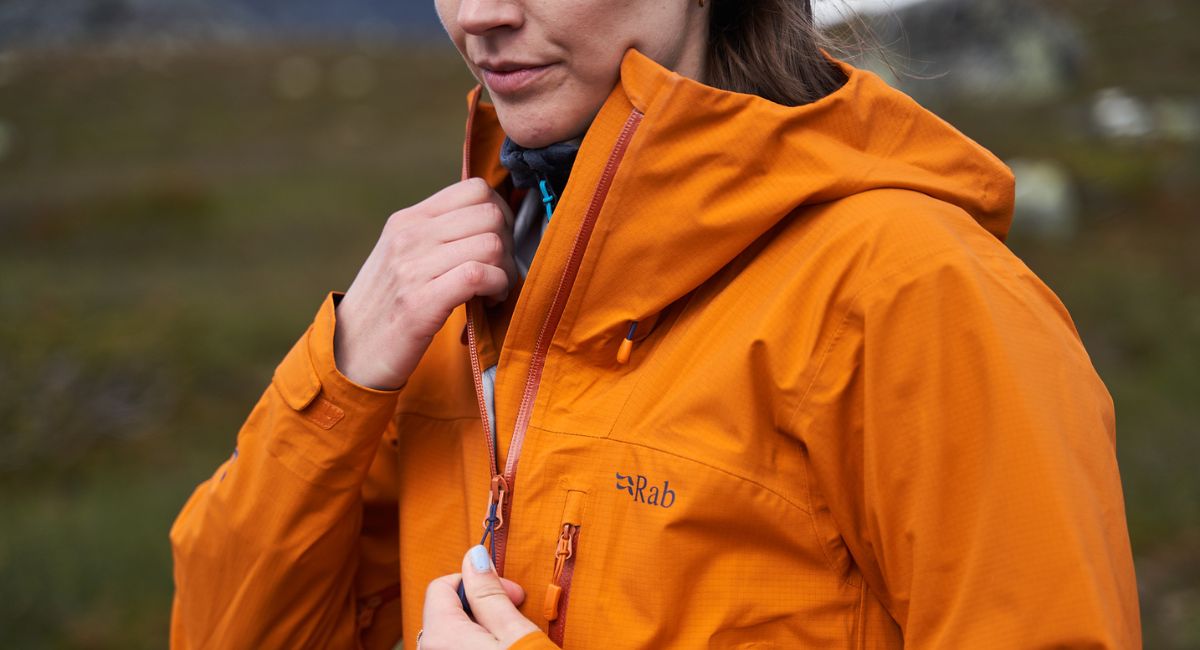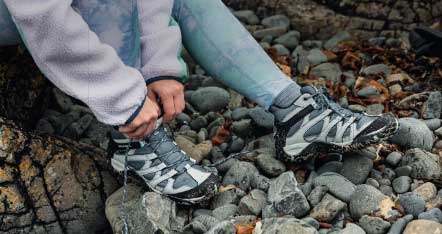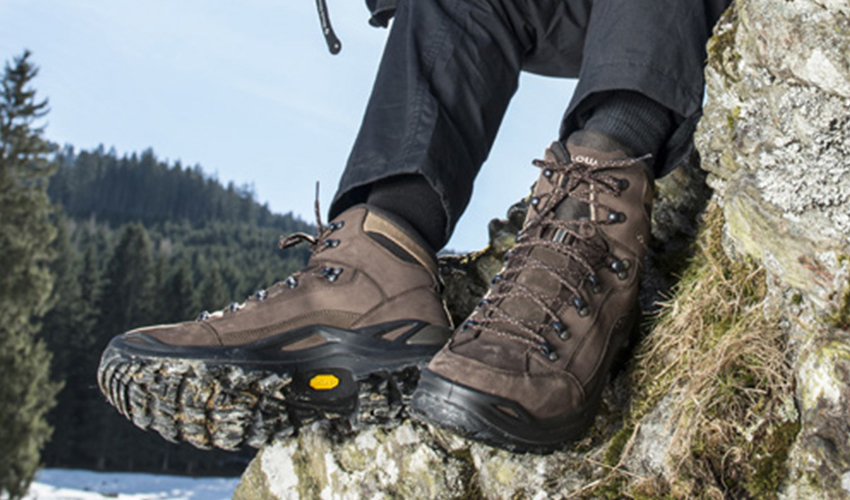Waterproof Care Guide
Technical Handbook for Outdoor Enthusiasts
Let’s be honest: British weather loves to keep us guessing. One minute it’s blue skies, the next it’s sideways rain. There’s nothing worse than heading out for a walk, a hike, or even just the school run, only to discover your trusty waterproof jacket isn’t quite as waterproof as you remember. Don’t worry, though. With a few simple steps, you can keep your kit performing brilliantly, season after season. Whether you’re a seasoned mountain-goer or just want to keep your raincoat in tip-top shape, we’ll walk you through the science, the steps, and the secrets of looking after your kit.
What Is Waterproof Fabric?
Waterproof fabrics are engineered to stop rain penetrating while allowing sweat vapour to escape, a property known as breathability. Most modern waterproofs use a sandwich construction:
- Face Fabric → Provides durability and carries the Durable Water Repellent (DWR) coating.
- Membrane or PU Film → The heart of waterproofing-e.g., GORE-TEX, eVent, Dermizax blocks water but lets vapour through.
- Scrim/Inner Layer → Protects the membrane and wicks moisture outwards.
There are three main types of construction:
- 3-Layer → All layers bonded for maximum durability (e.g., GORE-TEX Pro).
- 2.5-Layer → Outer and membrane are bonded with a thin protective print inside.
- 2-Layer → Outer and membrane bonded, with a loose inner lining for comfort.

Understanding DWR and Membrane Technologies
DWR Science
DWR (Durable Water Repellent) works by lowering the surface tension of the fabric, causing water to bead and roll off. Traditional DWRs used PFCs (perfluorinated compounds), but many brands now use PFC-free alternatives like Bionic-Finish Eco for better environmental performance.
Membrane Types
- Microporous Membranes → (e.g., GORE-TEX, eVent) Block water with tiny pores smaller than water droplets but large enough for vapour.
- Monolithic Membranes → (e.g., Dermizax) Use a solid, hydrophilic layer that transports moisture via molecular diffusion.
Seam Sealing
Even the best fabric will leak if seams aren’t sealed. Look for jackets with taped seams-strips of waterproof tape applied inside. Fewer seams and narrower tape mean lighter, more breathable jackets
How to Wash Your Waterproofs (Without Ruining Them)
When Should You Reproof Your Waterproofs?
Here’s a simple test → drip a bit of water onto your jacket. If it beads up and rolls off, you’re good. If it soaks in, it’s time to reproof.
You don’t need to reproof after every wash. But if you notice your jacket is getting heavy and damp in the rain, or the water’s not beading, give it a refresh.
Step 1: Prep Like a Pro
- Empty the pockets. (You don’t want to wash your car keys or last week’s snack.)
- Fasten all zips and Velcro. This stops them snagging or catching in the wash.
- Brush off mud and grit. A soft brush works wonders.
Step 2: Wash the Right Way
- Use a specialist cleaner (like Nikwax Tech Wash or Grangers Performance Wash). Ordinary detergent or fabric softener can wreck waterproofing; save those for your socks!
- Gentle cycle, 30°C. Don’t go hotter; you don’t want to melt anything.
- Don’t overload the machine. Two or three items at a time are perfect.
- Extra rinse if you can. This gets rid of any leftover cleaner.
Step 3: Drying Done Right
- Air-dry on a hanger, away from direct heat or sunlight.
- Tumble-dry on low heat (if the care label says it’s OK). The gentle heat helps reactivate the DWR coating.
NIKWAX

Cleaning using Nikwax Tech Wash
- Run your washing machine on a hot cycle with nothing in it and check that the tray is clean. This gets rid of any detergent left from previous washes, which work against your garment's DWR.
- Gently rinse off any thick dirt by hand, or for stubborn stains apply some of the Tech Wash directly onto the garment with a sponge before washing.
- Fasten all zips and velcro and place in the machine.
- Shake bottle, measure out the amount specified on the label, and pour into the washing machine drawer.
- Wash on a full cycle at 30°C/86°F or according to care label instructions.
Nikwax recommends washing no more than two items at a time. You should be able to wash reproofed kit 6-8 times with Nikwax Tech Wash before it requires reproofing with an appropriate Nikwax proofer.
Reproofing using Nikwax
Using Nikwax TX.Direct Wash-in:
Requires a washing machine.
- Ensure garment is clean after its wash. There's no need to dry the jacket before proofing.
- Use 100ml per garment (max 2 items)
- Shake bottle and pour into washing machine drawer
- Run 30°C synthetic cycle and slow spin
- Air dry or tumble dry on low settting if care label permits.
Using Nikwax TX.Direct Spray-On:
- Ensure garment is clean
- Protect working surface and lay clean, damp and fastened garment flat
- Shake bottle, hold 15cm/6 inches away, and spray evenly onto damp garment
- Wait for 2 minutes - remove any excess with a clean, damp cloth
- Check carefully to ensure no areas have been missed
- Air dry or tumble dry on low settting if care label permits
GRANGERS

Cleaning using Grangers Performance Wash
- Ensure there is no detergent or fabric conditioner residue in your washing machine.
- Gently rinse off any thick dirt from your garment by hand, do up all zips and Velcro and place in the machine.
- Shake bottle then add 1 capful (50ml) into the washing machine drawer for 1 jacket. Add an extra capful for every 2 garments added.
- Wash on a full cycle at 30°C/86°F or according to care label instructions.
NB: If you are short on time you can use Grangers Wash + Repel Clothing 2 in 1 instead which reproofs as well as cleans. However, heat activation is required for the DWR coating to be effective. After washing, tumble dry on low-medium heat, or gently apply heat using an iron or hairdryer. Watch video
Reproofing using Grangers
Using Grangers Clothing Repel (wash-in):
Requires a washing machine.
- Ensure garment is clean but still damp
- Place garment in washing machine, close all zips and velcro straps
- Shake bottle and pour two capfuls (100ml) into the washing machin drawer. Add and extra capful (50ml) for each additional garment being washed.
- Wash on a full cycle at 30°C/86°F or according to care label instructions
- Air-dry naturally or tumble dry if care label permits
Using Grangers Performance Repel Plus (spray-on):
If your jacket is fabric lined, use a spray-on proofer to not coat the lining.
- Ensure garment is washed clean but still damp.
- Protect working surface and lay garment flat.
- Shake bottle and spray evenly from 10-15cm away, applying extra to high impact areas like the shoulders.
- Use a clean cloth to wipe away any excess.
- Air-dry or tumble dry if care label permits.
FAQs
How often should I wash my waterproofs?
Every 5–10 outings, or whenever they’re muddy or sweaty. Don’t overdo it, but don’t leave them filthy either.
No! Always use a specialist cleaner. Ordinary detergent and softener can ruin waterproofing.
Usually, yes-on low heat. But always check the care label first.
Waterproof gear keeps out heavy rain, with sealed seams and a membrane. Water-resistant will fend off a shower, but not a downpour.
Related Articles

Let us know you agree to cookies
We use marketing, analytical and functional cookies as well as similar technologies to give you the best experience. Third parties, including social media platforms, often place tracking cookies on our site to show you personalised adverts outside of our website.
We store your cookie preferences for two years and you can edit your preferences via ‘manage cookies’ or through the cookie policy at the bottom of every page. For more information, please see our cookie policy.







